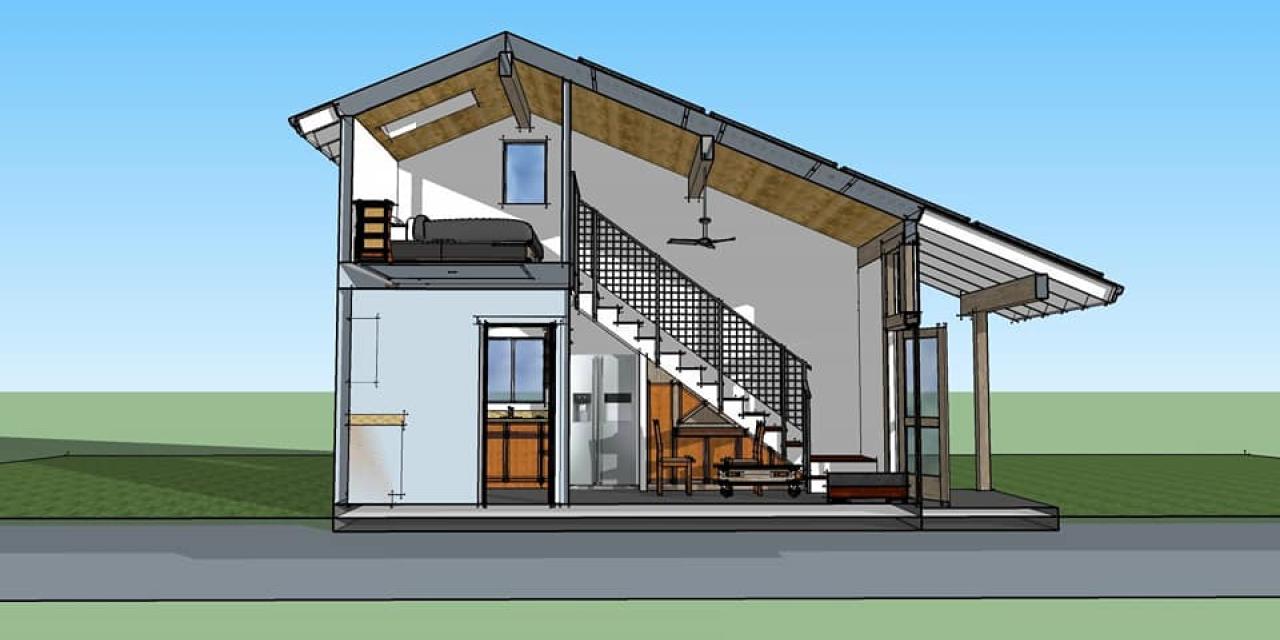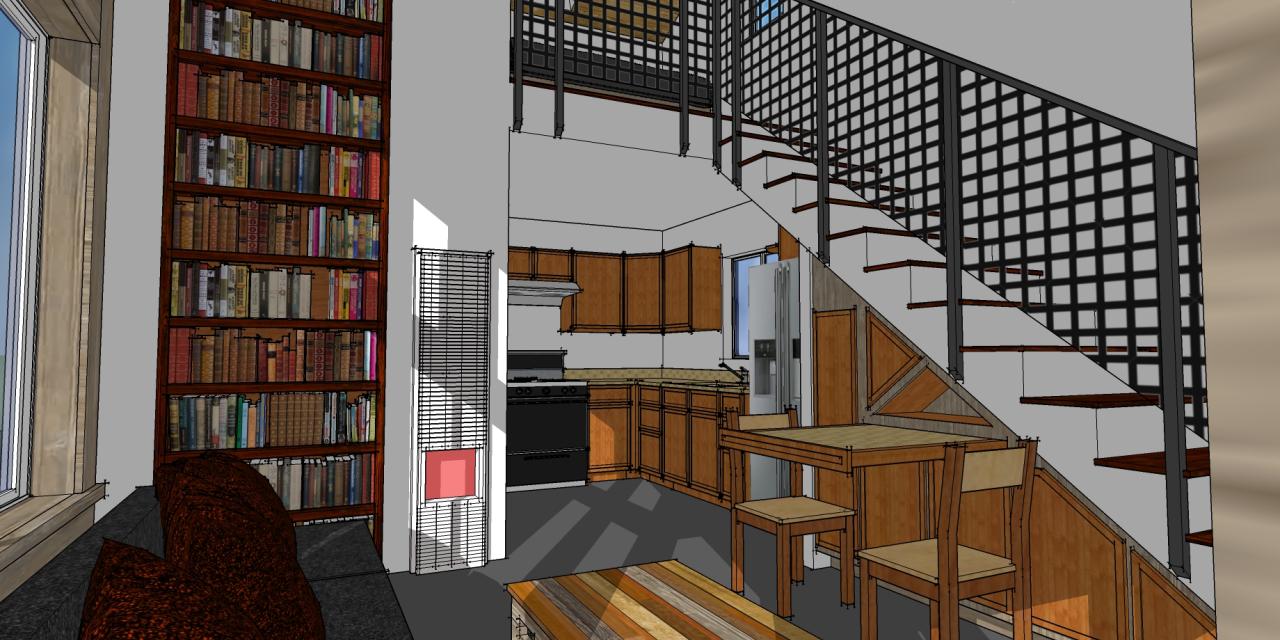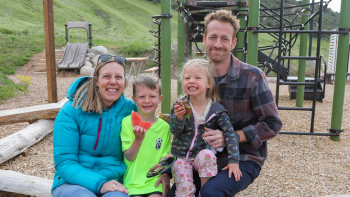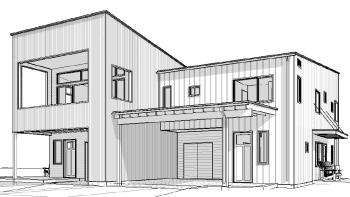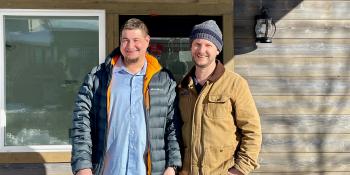
Starter home model revolutionizes affordable housing in Flagstaff
Story at a glance
- The housing affordability crisis is making it difficult for cities across the U.S. to recruit and retain essential community workers, including police officers and teachers.
- Habitat Northern Arizona is increasing the supply of affordable housing by building entry-level starter homes while driving down building costs, which are a nationwide barrier to building affordable housing.
- This starter home approach is set apart by energy-efficient, open-concept home designs as well as an innovative equity savings program.
Like many communities in the U.S., the city of Flagstaff, Arizona, is facing a housing affordability crisis. The cost of housing in the popular mountain city has reached record highs, with the median home price soaring to $650,000.
Meanwhile, the dearth of affordable housing has made it difficult for the city to recruit and retain essential community workers, such as teachers, police officers and firefighters. They simply can’t afford to live in Flagstaff.
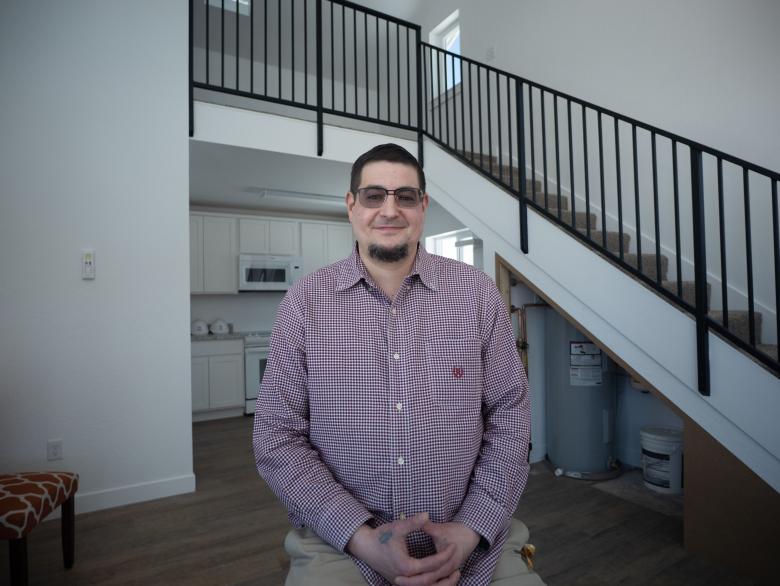
Tucker is the first homeowner to move into one of Habitat Northern Arizona’s new loft-style starter homes. “It’s the best thing I could ask for,” Tucker says.
Starter homes at scale
Habitat Northern Arizona created an innovative response to their community’s tremendous need for affordable housing: the starter home model.
By 2028, they plan to build 50 starter homes — simple and efficient 500-square-foot residences — and procure enough land partnerships for 50 more. The new starter homes will increase the affordable housing stock and keep low-wage earners rooted in Flagstaff.
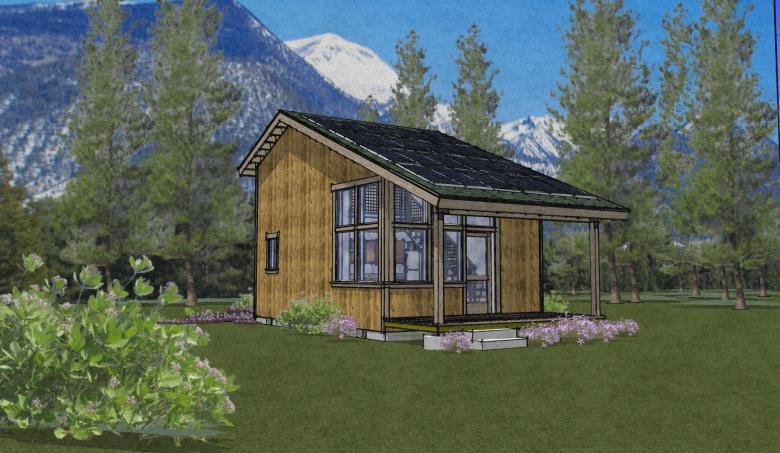
Habitat Flagstaff’s 500-square-foot starter homes feature a lofted bedroom, kitchen, full bathroom, living area and 23-foot vaulted ceilings.
“We loved the idea that a small concept home would allow us to build more with the same budget,” says Eric Wolverton, CEO at Habitat Northern Arizona. “We found a way to take equity and turn it into a savings program that homeowners can actually use to cash out when they outgrow their starter home.”
Through key partnerships with local organizations, volunteers and land donors, Habitat Northern Arizona was also able to scale their starter homes by driving down labor and construction costs — a nationwide barrier to building affordable housing.
The first two starter homes were constructed by local Coconino Community College students and installed on land donated by the city’s Land Trust Program. Course instructor Ken Myers says his students’ role inspired the next generation of homebuilders — two students who helped build the first starter home have already launched their own contracting companies.
More land was donated to Habitat Northern Arizona when a private developer scratched plans to build 10 affordable homes on three acres of land after learning the affiliate could leverage the same space to build 48 starter homes.
Starter homes: A closer look at the design
The open-concept house features a lofted bedroom, living area, kitchen and full bathroom.
Local architect and former Habitat Northern Arizona board president Karl Eberhard designed the structure with vaulted 23-foot ceilings and large windows to offer a spacious feel with plenty of natural light. The homes are also all-electric and equipped with solar panels and thermal insulation to keep energy costs low. Habitat affiliates can customize the design to fit construction contexts.
“We found a way to take equity and turn it into a savings program that homeowners can actually use to cash out when they outgrow their starter home.”— Eric Wolverton, Habitat Northern Arizona CEO
The innovative homeownership model
It’s the homeownership model that sets the starter home approach apart:
- Affordable down payment: Homebuyers purchase the house with just a $1,000 down payment, immediately reducing a major barrier to entry for many low-income home seekers.
- Monthly principal payments funneled into savings account: Homeowners put $833 in monthly principal payments into a savings account, which is set aside for the homeowner to access once they move out.
- Occupancy for 3-10 years: Starter homes serve as a medium-term place to increase savings and get low-income home seekers onto the housing continuum.
- Deed-restricted home: Habitat Northern Arizona reserves the right to the property when a homeowner moves out, ensuring another low-income Flagstaff resident can buy the starter home.
- Payout upon moving out: When a homeowner moves out, Habitat Northern Arizona pays them for the principal they’ve invested into the starter home – $10,000 annually for each year they lived there.
Residents can already feel the model’s impact — Tucker, who was the first to move into one of the starter homes, describes his new space as “just perfect.” He can’t wait to share his home with Aria, his 9-year-old daughter who lives with her mother in Colorado, when she visits him for the summer.
“It’s the best thing I could ask for. That’s what any parent would want, to provide good housing and a good life for their children,” Tucker says. “It’s even better knowing this house gets passed on to someone else, and I’ll move somewhere else and actually have the financial means to do that.”
